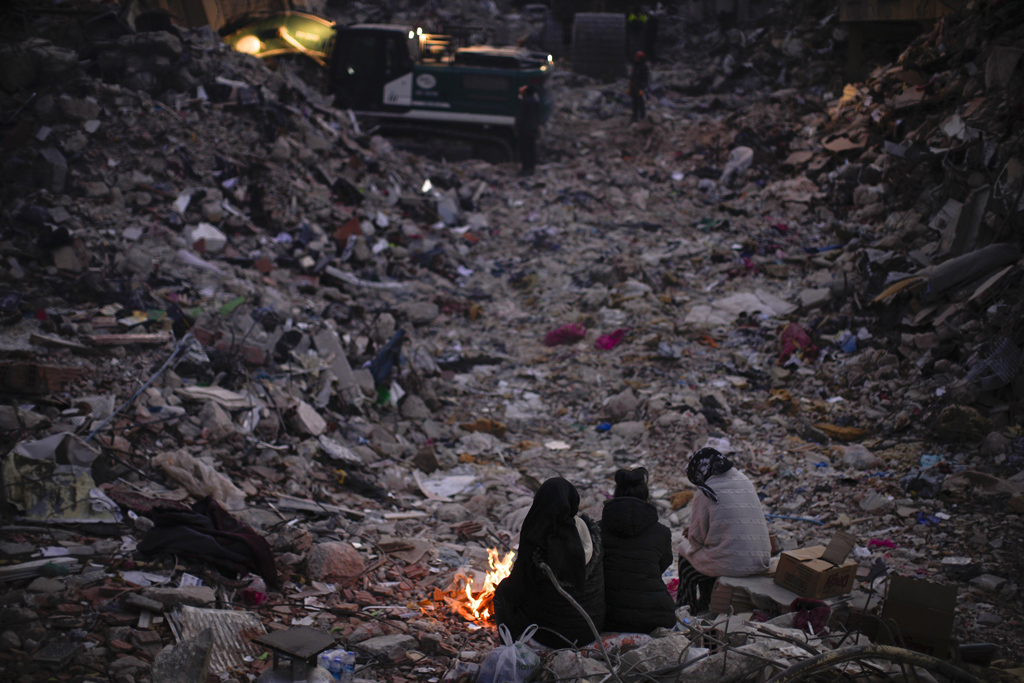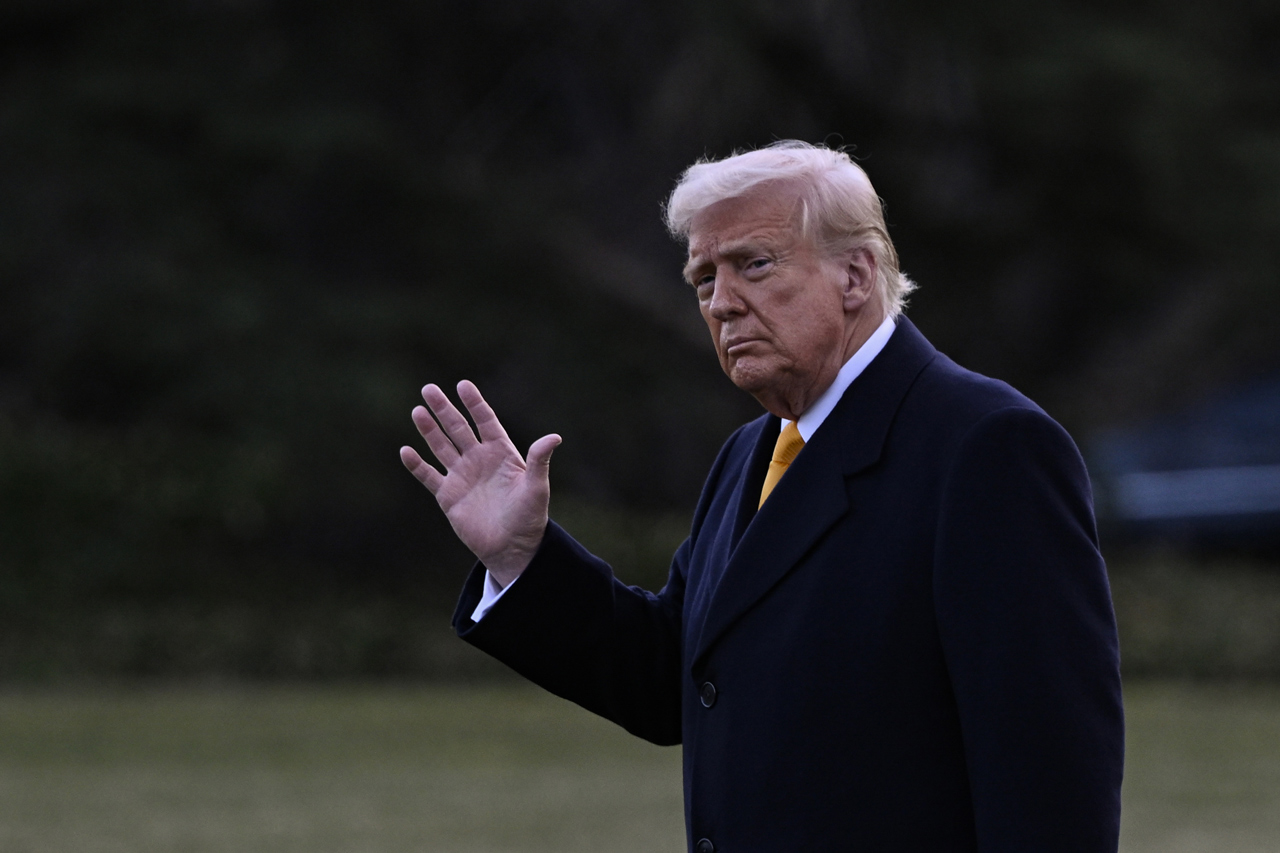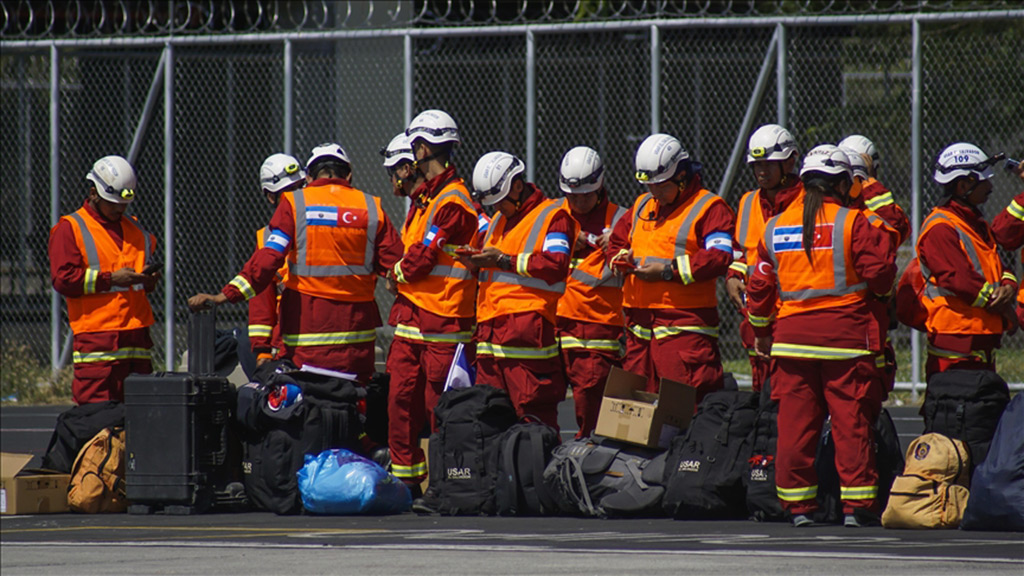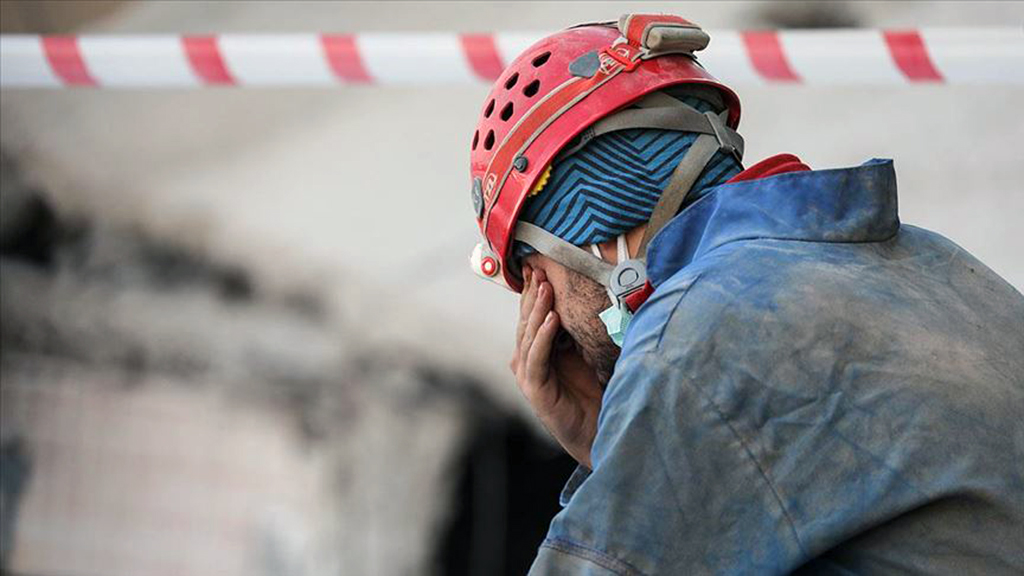The
earthquakes in Türkiye have unquestionably led to a massive loss of wealth, and now is the time to invest and rebuild that wealth. New infrastructure, houses, and human and physical capital investments are needed for a manageable and sustainable long-term full recovery. The quest for new financing models to rebuild these quake-hit provinces is a new concern.
In particular, earthquake-resilient housing retrofitting or
reconstruction needs massive additional funding schemes, as public or individual funding mechanisms could never be sufficient. In addition, millions of private properties or residential buildings built before 2000 require urgent strengthening or rebuilding.
On the other hand, our longer-term rebuilding cost estimate is between $45-$80 billion, with a mean value of $60 billion. This figure includes growth decline, cost of moving the rubble, cost of reconstruction of buildings and houses, renovation costs, labor and human capital losses, infrastructure and public facilities expenses, and the longer-term education and human capital loss costs. The figure could be expanded to $45-to-$150 billion, including the secondary charges.
Quest for funding
At this very point and apart from the conventional simple banking practices, more promising green finance options, micro-credits for entrepreneurs, blockchain-based new financing models, Initial Coin Offerings (ICOs), and more archaic Islamic financial instruments as well as focusing on attracting foreign direct investments (FDI), public subsidies, debt-based funding, equity-based, non-equity crowdfunding options are opening all new horizons to finance the rebuilding efforts in the earthquake hit southern Türkiye.
These examples could be extended with one-off taxes, bonds and even central bank financing. Meanwhile, earthquake insurances, specific earthquake taxes, personal savings or wealth, private bank loans, nongovernmental organizations (NGOs), domestic public support (from the Treasury and other public institutions), and external funding (from international organizations and governments) are just some of the examples of the potential institutional sources of financing for the post-quake rebuilding efforts.
Financial capital inflows such as aid or loans, strong budget figures, solid fiscal resilience, and low debt/gross domestic product (GDP) ratios could all help Türkiye rebuild. All these foreign capital inflows, financial support, new public incentives and government expenditures to rebuild houses, new infrastructure investment, and rebuilding regenerative businesses, could subsequently boost economic activity and end any prospective economic contraction.
Alternatively, climate-resilient building strategies could also help attract other funds tied to or conditional on green development and environmentally friendly and climate change-resistant housing projects. Building quake-resilient houses, climate-resilient and green buildings enabling green recovery policies, and utilizing technology for reconstruction should gradually attract more financial investment.
New agent-based financing models could also be developed, for instance. However, unlike earlier social housing projects (that could have even been rental), the post-quake housing projects should indeed be owner-driven. This would, for example, certainly help with safety and better financing options.
Institutional setup
Reliable disaster relief and risk management systems are also much needed. Hence, the first step in a comprehensive disaster rebuilding funding scheme would be the foundation of a new powerful institution. Better coordination, coherence, effective response, and central authority in rebuilding would help increase efficiency and trust in the recovery and relief efforts. Moreover, such a central authority would also likely boost financial assistance flowing into Türkiye.
Türkiye is meanwhile building another complementary institution, a new "fund" ("Afet Yeniden Imar Fonu") to seek longer-term funds and decrease the reconstruction burden over the public budget, as well as to facilitate rebuilding cities, infrastructure and the regional economy.
The fund is expected to have more transparent management. Such a permanent fund is expected to finance, from now on, infrastructure and reconstruction costs in all disaster-hit areas in Türkiye. It would finance not only the costs of this existing earthquake but all potential future
urban regeneration and new reconstruction projects related to natural disasters.
A critical question at this point is whether one-off specialized (to specific groups) taxes, such as wealth or rent taxes, could also be considered to support this new fund. In addition, special earthquake bonds could undoubtedly be used. Central bank funding could also be contemplated, just as a developmental central banking or a one-time, helicopter money type finance.
A large-scale public expenditure and funding model coordinated by the Treasury, central bank and other public institutions could also work. It would, in the meanwhile, not require any tax collections or debt issuance in advance.
Another fast funding source for rebuilding is the existing earthquake taxes in Türkiye. The Earthquake Solidarity Taxes were introduced in 1999 to cover the cost of damage, strengthen buildings, improve the construction sector, and prepare Türkiye for potential new earthquakes. These taxes were made permanent later on, in 2003.
The low insurance coverage is expected to cover a small amount of the quake losses. The Turkish Insurance Union expects $ 1.1 billion in insurance payments in the quake-hit region. These figures exclude DASK insurance payments. The 11 hardest-hit provinces, however, have a 49% DASK coverage.
Budget and borrowing opportunities
The economic costs of rebuilding also depend on the reaction of policymakers, especially in the early stages. For instance, the Turkish government initially allocated TL 100 billion (around $5.3 billion) of an emergency relief package to the related public institutions for use in the initial search, rescue, aid and support efforts, in the immediate aftermath of the earthquake.
Türkiye also has a substantial fiscal space to respond to and finance the reconstruction process. Firm budget and low debt/GDP ratios provide notable room to maneuver for the Turkish economy and the government to activate public funding schemes. Debt/GDP ratios are less than 35%. The low debt/GDP ratios mean extra room for borrowing. Budget circumstances are not dire, thanks to soaring tax collections in 2022 (an over 100% increase).
The budget deficit expected for 2023 was TL 660 billion (3.5% of GDP). Yet, the 2023 budget deficit could be pushed up to TL 1 trillion (5.4 % of the estimated TL 15 trillion GDP). Meanwhile, public banks alone have provided TL 80 billion to the quake-hit provinces. The Treasury is also activating new Credit Guarantee Fund (KGF) rounds.
Tax deferrals and debt relief will also help individuals, businesses and enterprises in that region to breathe fresh. In addition, it will help businesses recover, and companies will contribute to the rebuilding efforts. But on the other hand, the budget will undoubtedly be negatively affected because of tax payment deferrals and the economic devastation leading to the impossibility of tax collections.
Private sector, donations
The Turkish government is currently effectively using credit expansion and monetary easing to
help facilitate disaster management, relief and assistance, as well as its financing. In their latest rate cut (
50bps rate cut), the Central Bank of the Republic of Türkiye (CBRT) has also underlined the goal to help fund the recovery. This should help financial institutions augment their financial support for the region.
In that line, banks and other public institutions also provide particular loans for businesses in that region. Private banks, large corporations, joint ventures and even construction companies should all actively participate in these reconstruction efforts and the rebuilding of these provinces. However, first and foremost, the private sector should be able to use its own finances for reconstruction.
The Union of Chambers and Commodity Exchanges of Türkiye (TOBB)-led private sector permanent housing campaign for the quake-hit region (the "Gün Bugün" campaign) should also help reduce the public burden of substantial housing needs. Turkish companies such as Turkish Airlines (THY) and Baykar have already committed to 1,000 permanent houses each. Ülker Holding has also had a call to Turkish businesses for a campaign to build new permanent dwellings in the region.
Meanwhile, social capital is already activated in Türkiye. For example, eight major Turkish TV channels organized
a massive "Türkiye Tek Yürek" fundraising for earthquake relief. The total amount raised reached TL 115 billion ($6.2 billion). This is also an excellent example of the social capital capacity and will undoubtedly contribute significantly to recovery efforts.
This was, meanwhile, just a first step. Donations to other NGOs and public and private financial capital flows to the region should soon reach a few additional billions of dollars. Adding private insurance, private donations and compulsory insurance, the total available private funds figure could equal $3 billion (DASK alone has $1.4 billion in payments available).
International financial aid
Domestic finances will certainly not be sufficient. Hence, considerable international support and financial aid are also expected. For example, as a leading global institution with broad disaster management expertise, the World Bank's technical expertise and financial support will be critical.
Other international institutions, including the European Bank for Reconstruction and Development (EBRD), Asian Development Bank (ADB), Islamic Development Bank (IsDB) and the New Development Bank (NDB), should also take an active part in financing the rebuilding efforts. In such disastrous cases, international financial institutions and development banks' funding, loans and grants are life-saving.
The European Union and other international donors
have pledged 7 billion euros ($7.52 billion) at the International Donors Conference. In addition, the EBRD plans to redirect up to $1.6 billion in financial capital toward the quake-hit region. The World Bank's IDA has also provided significant financial means to various disaster-hit areas worldwide.
Many other countries and international institutions have also pledged financial aid. The World Bank has already committed a $1.8 billion initial emergency fund. The World Bank also provided $265 million in 2021 to help strengthen or reconstruct Türkiye's public buildings.
Other major players of the international financial system or sovereign national financial institutions' financial support are also vital. In particular, longer-term international financial options from the World Bank, ADB, IDB and EBRD could all be of great use later on. In addition, looking forward, a European, even an Organisation of Islamic Cooperation (OIC) fund for urgent financial assistance (to countries impacted by natural disasters), should also be considered.
Many world economies are also providing individual financial assistance to the quake-hit region. For example, the United Arab Emirates (UAE) and Saudi Arabia have donated over $100 million each. The United States' donation included $85 million with USAID; more are expected to follow. Meanwhile, the total aid from European citizens is again over $100 million. The Saudi Development Fund has also deposited $5 billion in the CBRT.
Qatar has also donated over $70 million. Qatar, in particular, is promoting international donations and aid campaigns for Türkiye. In addition, they are planning to dispatch 10,000 mobile homes to the quake-hit region. And a few hundred of them have already arrived.
Most of this financial aid, particularly from international institutions, including the World Bank, is expected to build physical infrastructure, including hospitals, roads, bridges, schools, electricity, water, gas and sewage system. These infrastructure investments are especially a crucial first step, as they will be most needed to reactivate the economic activity.
Innovative new methods
On top of the earlier funding options, it is probably time to use other innovative methods. For example, despite the fears of a new war and regulation against cryptocurrencies by sovereign nations, their increased usage in donations during wars or natural disasters is raising their price again.
In such times of uncertainties and insecurities, a tendency toward alternative payment methods rises. Blockchain technologies and crypto payments are one such area of cross-border and peer-to-peer payments. This instrument enables money transfers even when conventional financial transactions are halted or suspended.
Even Turkish public institutions have set crypto wallets to accept donations in cryptocurrencies. Ukraine did the same last year following the outbreak of the war with Russia. In addition, international crypto and blockchain entities and crypto exchanges have pledged considerable aid to earthquake survivors in Türkiye.
Just as during the early days of the war in Ukraine, cryptocurrency donations for earthquake victims in Türkiye also indicate a new era of digital financial transformation. Cryptocurrencies are already effectively used by NGOs such as Ahbab, the Humanitarian Relief Foundation (IHH) and even public organizations such as the Disaster and Emergency Management Authority (AFAD) and the Turkish Red Crescent (Kızılay).
Furthermore, private ventures and businesses in the quake-hit region could also benefit from other new innovative funding schemes. For example, the earthquake heavily affects the region's agricultural sector and farming. In these sectors, in particular, ICOs, digital tokens, other crowdfunding options, or even salam contracts (prepaid forward sale contracts) could be used to deal with short-term financing challenges.
Therefore, conventional banking-based funding options should not be the only option to fund the post-quake reconstruction efforts, just as they should not be the only option for modern-era financing efforts. Blockchain technologies could help individuals and SMEs overcome credibility issues and ensure easy financial access.
Financing of rebuilding should be manageable
There are already quite a few financing options awaiting to be exploited during the reconstruction process. More promising green finance options, micro-credits, blockchain-based new financing models, ICOs, more archaic Islamic financial instruments, attracting FDI, public subsidies, debt-based funding, equity-based, and non-equity crowdfunding options are opening new horizons to fund the rebuilding efforts. These examples could be extended with one-time taxes, bonds and even central bank financing.
Bilateral and multilateral agreements with international and national financial institutions should be signed to ensure funding for regional and local producers and commercial entities. Finances for infrastructure are probably the most critical issue here. Medium-to-longer-term financing options are pivotal for these types of physical investments.
Natural disaster insurances are also much more common nowadays, as is clear from the introduction of DASK. Therefore, insurance should cover more economic costs than any other earlier natural disaster. In that line, thanks to more general insurance and securitization, potential negative impacts on the banking sector and financial system and the burden on the public sector will also be limited.
The experience Türkiye has gained so far during all the disasters, accompanied by financial support (especially from international institutions), will provide much-needed, critical support in such disastrous times. Reactivated social capital is one issue. Production capacity, human capital base, new investments, and inflow of financial capital will all help rebuild the physical infrastructure, revive weak business life and boost the regional economy.
It is expected that the financing of the post-quake rebuilding should therefore be manageable, just as is the recovery and revitalization process. However, rebuilding efforts should probably consider climate risks also, in addition to the risks related to earthquakes and seismic structures. We should not let the disasters cloud our longer-term goals of a sustainable, more inclusive and just world.
[Daily Sabah, March 22 2023]









